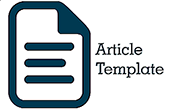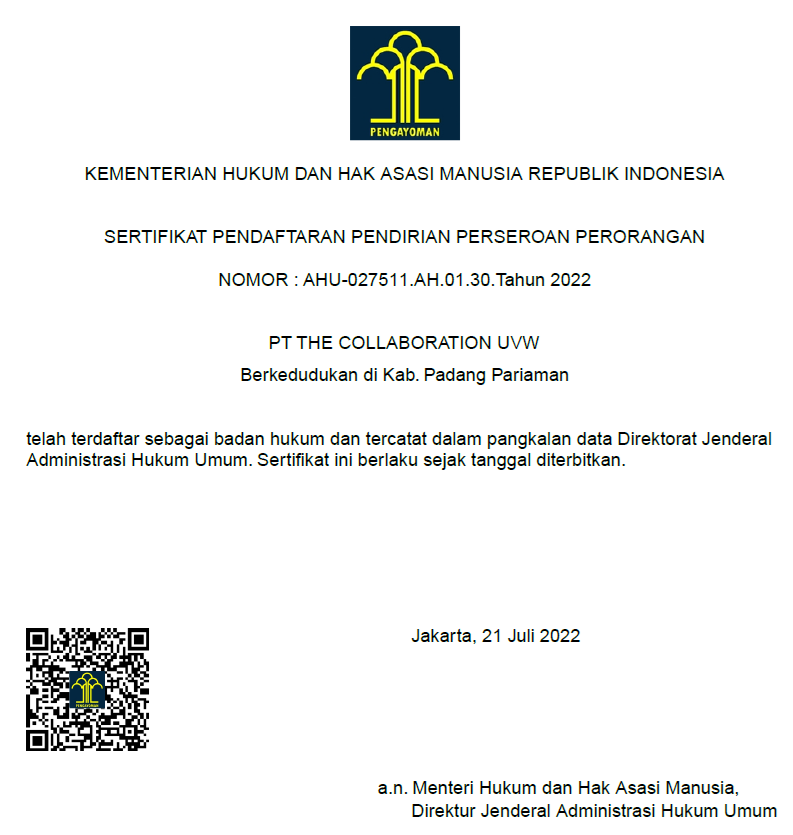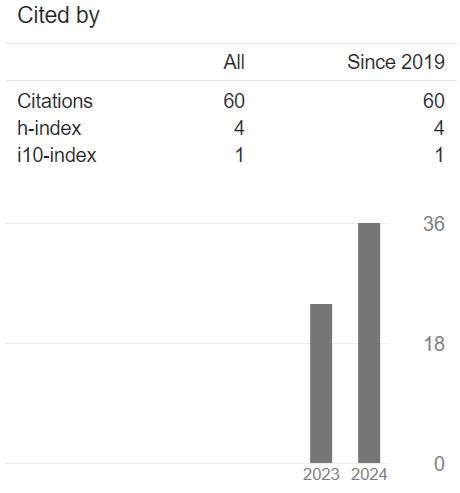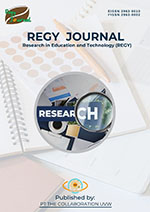The needs for developing the SABU-SABU method to increase the reading interest of students through digital libraries
DOI:
https://doi.org/10.62590/regy.v3i1.106Keywords:
reading literacy, interest in reading, digital library, Industrial Revolution 4.0Abstract
The literacy level in Indonesia is still low, namely ranking 62nd out of 70 countries with an average literacy score of 397 compared to developed countries of 493. This is proven by the low reading interest of students in schools in Indonesia. The research methodology used qualitative with a sample of 43 students from a population of 110. From the research results, it was found that student’s interest in reading at SMAN 19 Tebo was still low. For this reason, it is necessary to develop a method that can increase student’s interest in reading at the high school level, especially at SMAN 19 Tebo.
References
Aboelmaged, M., Mouakket, S., & Ali, I. (2024). A scientometric analysis of digital library adoption over the past 30 years: Models, trends, and research directions. Journal of Librarianship and Information Science, 56(3), 809-828. https://doi.org/10.1177/09610006231161143.
Agustin, S., & Cahyono, B. E. H. (2017). Gerakan literasi sekolah untuk meningkatkan budaya baca di SMA Negeri 1 Geger. Linguista: Jurnal Ilmiah Bahasa, Sastra, danPembelajarannya, 1(2), 55-62. https://doi.org/10.25273/linguista.v1i2.1973.
Aharony, N., Julien, H., & Nadel-Kritz, N. (2020). Survey of information literacy instructional practices in academic libraries. Journal of Librarianship and Information Science, 52(4), 964-971. https://doi.org/10.1177/0961000619891762.
Akinola, S. A. (2022). Management of academic library services in the 21st century digital dispensation. Alexandria, 32(2), 90-104. https://doi.org/10.1177/09557490231217714.
Ali, N., Shoaib, M., & Abdullah, F. (2023). Information literacy and research support services in academic libraries: A bibliometric analysis from 2001 to 2020. Journal of Information Science, 49(6), 1593-1606. https://doi.org/10.1177/01655515211068169.
Allard, B., Lo, P., Liu, Q., Ho, K. K. W., Chiu, D. K. W., Chen, J. C. C., Zhou, Q., & Jiang, T. (2020). LIS pre-professionals’ perspectives towards library user education: A comparative study between three universities in Greater China. Journal of Librarianship and Information Science, 52(3), 832-852. https://doi.org/10.1177/0961000619874106.
Alzahrani, A. I., Mahmud, I., Ramayah, T., Alfarraj, O., & Alalwan, N. (2019). Modelling digital library success using the DeLone and McLean information system success model. Journal of Librarianship and Information Science, 51(2), 291-306. https://doi.org/10.1177/0961000617726123.
Amram, S. B., Aharony, N., & Ilan, J. B. (2021). Information literacy education in primary schools: A case study. Journal of Librarianship and Information Science, 53(2), 349-364. https://doi.org/10.1177/0961000620938132.
Arpan, M., Budiman, R. D. A., & Jalinus, N. (2018). Usulan sistem pengolahan data siswa di SMP Harapan Ananda Kubu Raya. Jurnal Pendidikan Informatika dan Sains, 7(2), 271-280.
Boerma, I. E., Mol, S. E., & Jolles, J. (2018). Parents adjust the quality of their home literacy environment to the reading interest of their third to sixth graders. Parenting, 18(4), 243-261. https://doi.org/10.1080/15295192.2018.1524243.
Chang, Y.-W. (2019). A comparison of researcher–practitioner collaborations in library and information science, education, and sociology. Journal of Librarianship and Information Science, 51(1), 208-217. https://doi.org/10.1177/0961000617726121.
Clarke, R. I., Grimm, A., Zhang, B., & Stanton, K. L. (2023). Time, tasks, and toll: Changes in library work during the Covid-19 pandemic. Journal of Library Administration, 63(4), 421-445. https://doi.org/10.1080/01930826.2023.2201717.
Cordero, K., Chiuminatto, P., Duncan, S., & Vera, E. (2020). Millennials in the stacks: Choices, habits and attitudes of frequent library users between the ages of 18–29 in Santiago, Chile. The International Information & Library Review, 53(1), 15-34. https://doi.org/10.1080/10572317.2020.1786794.
Hall, G. J., Nelson, P. M., & Parker, D. C. (2024). What environments support reading growth among current compared with former reading intervention recipients? A multilevel analysis of students and their schools. Journal of Learning Disabilities, 2024(April). https://doi.org/10.1177/00222194241236164.
Hebbecker, K., Förster, N., & Souvignier, E. (2019). Reciprocal effects between reading achievement and intrinsic and extrinsic reading motivation. Scientific Studies of Reading, 23(5), 419-436. https://doi.org/10.1080/10888438.2019.1598413.
Holbert, R. M. G. (2019). Quick fix: Using the circle question format to promote pre-reading for individual and collaborative critical thinking. College Teaching, 67(2), 83-85. https://doi.org/10.1080/87567555.2018.1558167.
Huang, S., Han, Z., Yang, B., & Ren, N. (2019). Factor identification and computation in the assessment of information security risks for digital libraries. Journal of Librarianship and Information Science, 51(1), 78-94. https://doi.org/10.1177/0961000616668572.
Inskip, C. (2023). What are the options for library and information studies education reform in addressing racial inequity in the library profession in the UK? Journal of Librarianship and Information Science, 55(4), 972-998. https://doi.org/10.1177/09610006221114483.
Ives, S. T., Parsons, S. A., Cutter, D., Field, S. A., Wells, M. S., & Lague, M. (2022). Intrinsic and extrinsic reading motivation: Context, theory, and measurement. Reading Psychology, 44(3), 306-325. https://doi.org/10.1080/02702711.2022.2141403.
Julien, H., Gross, M., & Latham, D. (2018). Survey of information literacy instructional practices in U.S. academic libraries. College & Research Libraries, 79(2), 179-199. https://doi.org/10.5860/crl.79.2.179.
Kanonire, T., Lubenko, J., & Kuzmina, Y. (2020). The effects of intrinsic and extrinsic reading motivation on reading performance in elementary school. Journal of Research in Childhood Education, 36(1), 1-13. https://doi.org/10.1080/02568543.2020.1822961.
Keshavarz, H. (2021). Entrepreneurial capabilities of librarians in university libraries: A cross-contextual study on the impact of information literacy. Journal of Business & Finance Librarianship, 26(3), 200-222. https://doi.org/10.1080/08963568.2021.1941576.
Li, J. T., Arizmendi, G. D., & Swanson, H. L. (2022). The influence of teachers’ math instructional practices on English learners’ reading comprehension and math problem-solving performance in Spanish and English. International Journal of Bilingual Education and Bilingualism, 25(10), 3614-3630. https://doi.org/10.1080/13670050.2022.2068346.
Link, E., Henke, J., & Möhring, W. (2021). Credibility and enjoyment through data? Effects of statistical information and data visualizations on message credibility and reading experience. Journalism Studies, 22(5), 575-594. https://doi.org/10.1080/1461670X.2021.1889398.
Lo, P., Ho, K. K. W., Allard, B., Horng, S.-C., & Liu, Y. (2019). Reading the city via the public central library in the sociocultural context: A comparative study between the Hong Kong Central Library, Shanghai Library and Taipei Public Library. Journal of Librarianship and Information Science, 51(2), 458-472. https://doi.org/10.1177/0961000617742448.
Locher, F. M., Becker, S., & Pfost, M. (2019). The relation between students’ intrinsic reading motivation and book reading in recreational and school contexts. AERA Open, 5(2), 1-14. https://doi.org/10.1177/2332858419852041.
Loh, C. E., Hamarian, E. B. M., Qi, L. L. Y., Lim, Q., & Zee, S. N. Y. (2021). Developing future-ready school libraries through design thinking: A case study. IFLA Journal, 47(4), 505-519. https://doi.org/10.1177/03400352211028897.
Martzoukou, K. (2021). Academic libraries in Covid-19: a renewed mission for digital literacy. Library Management, 42(4), 266-276. https://doi.org/10.1108/LM-09-2020-0131.
Miyamoto, A. (2023). A role of gender in the reciprocal relations between intrinsic reading motivation and reading comprehension. Scientific Studies of Reading, 28(3), 256-269. https://doi.org/10.1080/10888438.2023.2260032.
Mohammadi, R. R., Saeidi, M., Ahangari, S., & Hui, S. K. F. (2020). Self-regulated learning instruction and the relationships among self-regulation, reading comprehension and reading problem solving: PLS-SEM approach. Cogent Education, 7(1), 1-22. https://doi.org/10.1080/2331186X.2020.1746105.
Mohseni, F., Seifoori, Z., Ahangari, S., & Khajavi, Y. (2020). The impact of metacognitive strategy training and critical thinking awareness-raising on reading comprehension. Cogent Education, 7(1), 23-44. https://doi.org/10.1080/2331186X.2020.1720946.
Mubofu, C. (2023). Experiences, purposes, satisfaction and missing library services as predictors of library information services provision: A case study. Alexandria, 33(1), 64-79. https://doi.org/10.1177/09557490241244747.
Ng, W. S., Wong, T. T. Y., & Fong, C. Y. C. (2021). Contributions of reading comprehension subskills to arithmetic word-problem solving among Chinese primary school students. Journal of Cognition and Development, 22(4), 585-604. https://doi.org/10.1080/15248372.2021.1916498.
Öztürk, M., Akkan, Y., & Kaplan, A. (2019). Reading comprehension, Mathematics self-efficacy perception, and Mathematics attitude as correlates of students’ non-routine Mathematics problem-solving skills in Turkey. International Journal of Mathematical Education in Science and Technology, 51(7), 1042-1058. https://doi.org/10.1080/0020739X.2019.1648893.
Radfar, A. H., Fahimnia, F., Esmaeili, M. R., & Beheshti, M. A-S. (2020). Semantic modeling for education of library and information sciences in Iran, based on Soft Systems Methodology. IFLA Journal, 46(3), 271-289. https://doi.org/10.1177/0340035219881641.
Ramgadwala, H. (2024). Impact of multimedia on academic information literacy instruction in libraries. IFLA Journal, 50(2), 273-291. https://doi.org/10.1177/03400352231222042.
Ruthven, I., Robinson, E., & McMenemy, D. (2023). The value of digital and physical library services in UK public libraries and why they are not interchangeable. Journal of Librarianship and Information Science, 55(4), 1143-1154. https://doi.org/10.1177/09610006221127027.
Son, S. (2024). Libraries’ roles in media and information literacy education: Obtaining the opinions of South Korean volunteer librarians through the Delphi method. IFLA Journal, 2024(June). https://doi.org/10.1177/03400352241252922.
Subrata, G. (2009). Perpustakaan Digital. Malang: Universitas Negri Malang.
Tajedini, O., Khasseh, A. A., Afzali, M., & Sadatmoosavi, A. (2020). How to increase the loyalty of public library users? A qualitative study. Journal of Librarianship and Information Science, 52(2), 317-330. https://doi.org/10.1177/0961000619856081.
Teague, D. P. (2019). Tips for teaching library instruction and information literacy to first-gen college students, nontraditional students, or English as a second language (ESL) students. Serials Review, 45(3), 105-110. https://doi.org/10.1080/00987913.2019.1644699.
Toste, J. R., Didion, L., Peng, P., Filderman, M. J., & McClelland, A. M. (2020). A meta-analytic review of the relations between motivation and reading achievement for K-12 students. Review of Educational Research, 90(3), 420-456. https://doi.org/10.3102/0034654320919352.
Tsabedze, V. (2020). Toward a Framework for quality assurance of library and information science education in an open distance e-learning environment in Eswatini. Journal of Library & Information Services in Distance Learning, 14(2), 160-175. https://doi.org/10.1080/1533290X.2020.1806176.
Tsabedze, V. (2021). MOOCs and OER: A model for library and information science education. Internet Reference Services Quarterly, 25(3), 87-106. https://doi.org/10.1080/10875301.2021.1930621.
Tsunekage, T., Bishop, C. R., Long, C. M., & Levin, I. I. (2019). Integrating information literacy training into an inquiry-based introductory biology laboratory. Journal of Biological Education, 54(4), 396-403. https://doi.org/10.1080/00219266.2019.1600569.
Tu-Keefner, F., Liu, J., Lyons, D., Hobbs, A., Smith, J. C., & Corbo, M. (2020). Disaster health information access and public libraries’ situation-specific information services: What public librarians and library users said. Journal of Consumer Health on the Internet, 24(3), 201-227. https://doi.org/10.1080/15398285.2020.1791666.
Wang, L., Lee, H., & Ju, D. Y. (2018). Impact of digital content on young children’s reading interest and concentration for books. Behaviour & Information Technology, 38(1), 1-8. https://doi.org/10.1080/0144929X.2018.1502807.
Wang, Q., Ma, M., Shi, Y., Li, M., & Wang, T. (2023). Modeling the relationships among home literacy environment, reading interest, self-regulation, and reading ability of children with intellectual disabilities in China. International Journal of Developmental Disabilities, 70(5), 1-10. https://doi.org/10.1080/20473869.2023.2230411.
Wang, R., Wu, C., Wang, X., Xu, F., & Yuan, Q. (2024). E-tourism information literacy and its role in driving tourist satisfaction with online travel information: A qualitative comparative analysis. Journal of Travel Research, 63(4), 904-922. https://doi.org/10.1177/00472875231177229.
Wann, T., Khongtim, J., & Chyne, R. C. (2024). Assessing the impact of information literacy on farmers’ decision-making processes: A mixed-methods approach. IFLA Journal, 2024(July). https://doi.org/10.1177/03400352241261730.
Wema, E. F. (2024). The role of Tanzania library services board in enhancing information literacy skills among the public in Tanzania. Information Development, 40(3), 398-413. https://doi.org/10.1177/02666669221123039.
Widén, G., Ahmad, F., & Huvila, I. (2023). Connecting information literacy and social capital to better utilise knowledge resources in the workplace. Journal of Information Science, 49(6), 1481-1492. https://doi.org/10.1177/01655515211060531.
Widiana, I. W., Triyono, S., Sudirtha, I. G., Adijaya, M. A., & Wulandari, I. G. A. A. M. (2023). Bloom’s revised taxonomy-oriented learning activity to improve reading interest and creative thinking skills. Cogent Education, 10(2), 1-15. https://doi.org/10.1080/2331186X.2023.2221482.
Winarko, B. (2009). Perpustakaan digital di Indonesia dan fitur-fitur yang tersedia. Jurnal Perpustakaan Pertanian, 18(2), 45.
Winata, A. P., Fadelina, R., & Basuki, S. (2021). New normal and library services in Indonesia: a case study of university libraries. Digital Library Perspectives, 37(1), 77-84. https://doi.org/10.1108/DLP-07-2020-0059.
Witanto, J. (2018). Minat baca yang sangat rendah. Salatiga: Fakultas Keguruan dan Ilmu Pendidikan Universitas Kristen Satya Wacana Salatiga.
Witt, S. (2024). Libraries leading the way: Sustainability, information literacy, and community engagement. IFLA Journal, 2024(September), 1-2. https://doi.org/10.1177/03400352241283305.
Wyatt, D., Mcquire, S., & Butt, D. (2018). Libraries as redistributive technology: From capacity to culture in Queensland’s public library network. New Media & Society, 20(8), 2934-2953. https://doi.org/10.1177/1461444817738235.
Xie, I., Joo, S., & Matusiak, K. K. (2021). Digital library evaluation measures in academic settings: Perspectives from scholars and practitioners. Journal of Librarianship and Information Science, 53(1), 130-152. https://doi.org/10.1177/0961000620935505.
Yulian, R. (2021). The flipped classroom: Improving critical thinking for critical reading of EFL learners in higher education. Studies in English Language and Education, 8(2), 508-522. https://doi.org/10.24815/siele.v8i2.18366.
Zhao, W., Song, Y., Zhao, Q., & Zhang, R. (2018). The effect of teacher support on primary school students’ reading engagement: the mediating role of reading interest and Chinese academic self-concept. Educational Psychology, 39(2), 236-253. https://doi.org/10.1080/01443410.2018.1497146.
Zhu, S., Yang, H. H., Wu, D., & Chen, F. (2021). Investigating the Relationship Between Information Literacy and Social Media Competence Among University Students. Journal of Educational Computing Research, 59(7), 1425-1449. https://doi.org/10.1177/0735633121997360.
Downloads
Published
How to Cite
Issue
Section
License
Copyright (c) 2024 Nadhiyatul Fatkhi, Novriyanti Achyar

This work is licensed under a Creative Commons Attribution-ShareAlike 4.0 International License.
















